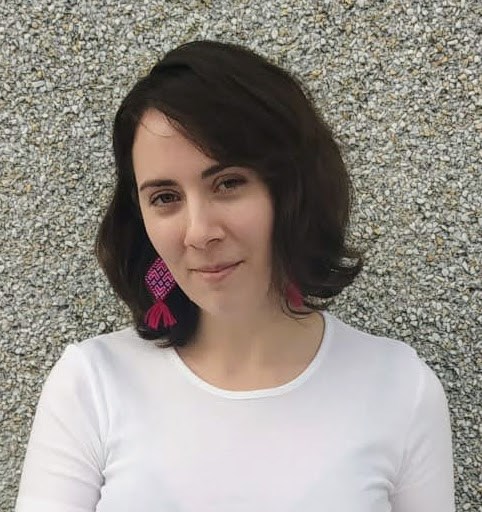Art
Northern Arts Review: Why art is smart investment – Alaska Highway News
 Hello, dear reader. This week, I will cover a big announcement from the BC Arts Council, as well as some ins and outs of the arts grant–writing system, and argue for stronger relationships between local governments and arts organizations for the betterment of the community.
Hello, dear reader. This week, I will cover a big announcement from the BC Arts Council, as well as some ins and outs of the arts grant–writing system, and argue for stronger relationships between local governments and arts organizations for the betterment of the community.
On November 12th, the BC Arts Council announced its Arts Infrastructure Program, with awards up to $250,000, more than three times the usual amount made available through this program. The purpose of this funding is for arts organizations to acquire, construct, or renovate an arts space that will enhance the cultural capacity of the community. There are two other streams for funding as well, worth up to $25,000 for planning and research and $40,000 for acquiring specialized equipment. The deadline is 11:59 PM on Jan. 14, 2022.
The BC Arts Council will host a virtual information session for communities and organizations in the Peace-Liard Region about this program at noon on Dec. 2. This session will include insight on the AIP from Program Officers Erin Macklem and Sarah Todd, as well as a Q&A section.
This grant is a great opportunity that can make a major difference in the region. If successful, it could finance the new arts hub in Fort St. John, a permanent gallery space in Chetwynd, or much needed renovations for the Dawson Creek Art Gallery. This is the second year in a row that BCAC has released funding through this program. However, it is unclear whether it will be offered again, so it is important to seize this opportunity now.
The BC Arts Council has been working to serve rural communities better in recent years, which is why the grant qualifications are slightly relaxed for northern communities. This grant may be up to 90% of the total budget for projects based in rural and remote areas with a small population. As an example, for applicant organizations based in Dawson Creek or Fort St. John, only 10% of the budget needs to come from an additional source. Meaning $25,000 can become $250,000, which is a great investment. On the other hand, the grant can only make up to 75% of the project budget for organizations in communities that don’t qualify as rural or underserved.
These budget splits are often how arts funding works from granting bodies like the BC Arts Council, Canada Arts Council, First Peoples’ Cultural Council, and Creative BC, although the funding component is not usually as high as 90%. Grant-based awards typically cover between 50% to 75% of a project total, which is still incredibly generous. Even with a 50% split, an applicant can double their project budget. The purpose of these splits is to show that the project is feasible, and has support from more than one source. This is something that arts administrators know well, as navigating this grant system is a large part of what they do. However, this point is often lost on local governments, who don’t have close working relationships with these funding sources.
The drawback with opportunities like the the AIP is that it often requires cooperation from municipal governments, who are slow to respond. Often arts spaces are publicly owned, but operated by a non-profit. For example, the Dawson Creek Art Gallery building is owned by the City of Dawson Creek, meaning that the gallery cannot go ahead with an application like this without the city’s support. Historically, the arts have been a blind spot for our local leaders, and this oversight is leaving money on the table, to the detriment of the community.
Understandably, at any given time there are many other pressing needs demanding the attention of local politicians—the pandemic, for example. The cultural revitalization of our communities slips lower down the priority list. However, this needn’t be the case. What is needed to allocate funds efficiently is simply an understanding that the arts and its funding system is a complex industry with many opportunities that require specific expertise and knowledge to capitalize on. This is why local governments need to work closely with arts organizations, and be more responsive to them, so that when opportunities like the Arts Infrastructure Program arise, both parties are prepared to make the best of them. That way, we can bet small and win big for the communities we serve.
Do you have an artistic endeavour you would like to promote? Is there a topic you would like me to discuss? I would love to hear from you! Please email me at programs@dcartgallery.ca.
Art
Calvin Lucyshyn: Vancouver Island Art Dealer Faces Fraud Charges After Police Seize Millions in Artwork

In a case that has sent shockwaves through the Vancouver Island art community, a local art dealer has been charged with one count of fraud over $5,000. Calvin Lucyshyn, the former operator of the now-closed Winchester Galleries in Oak Bay, faces the charge after police seized hundreds of artworks, valued in the tens of millions of dollars, from various storage sites in the Greater Victoria area.
Alleged Fraud Scheme
Police allege that Lucyshyn had been taking valuable art from members of the public under the guise of appraising or consigning the pieces for sale, only to cut off all communication with the owners. This investigation began in April 2022, when police received a complaint from an individual who had provided four paintings to Lucyshyn, including three works by renowned British Columbia artist Emily Carr, and had not received any updates on their sale.
Further investigation by the Saanich Police Department revealed that this was not an isolated incident. Detectives found other alleged victims who had similar experiences with Winchester Galleries, leading police to execute search warrants at three separate storage locations across Greater Victoria.
Massive Seizure of Artworks
In what has become one of the largest art fraud investigations in recent Canadian history, authorities seized approximately 1,100 pieces of art, including more than 600 pieces from a storage site in Saanich, over 300 in Langford, and more than 100 in Oak Bay. Some of the more valuable pieces, according to police, were estimated to be worth $85,000 each.
Lucyshyn was arrested on April 21, 2022, but was later released from custody. In May 2024, a fraud charge was formally laid against him.
Artwork Returned, but Some Remain Unclaimed
In a statement released on Monday, the Saanich Police Department confirmed that 1,050 of the seized artworks have been returned to their rightful owners. However, several pieces remain unclaimed, and police continue their efforts to track down the owners of these works.
Court Proceedings Ongoing
The criminal charge against Lucyshyn has not yet been tested in court, and he has publicly stated his intention to defend himself against any pending allegations. His next court appearance is scheduled for September 10, 2024.
Impact on the Local Art Community
The news of Lucyshyn’s alleged fraud has deeply affected Vancouver Island’s art community, particularly collectors, galleries, and artists who may have been impacted by the gallery’s operations. With high-value pieces from artists like Emily Carr involved, the case underscores the vulnerabilities that can exist in art transactions.
For many art collectors, the investigation has raised concerns about the potential for fraud in the art world, particularly when it comes to dealing with private galleries and dealers. The seizure of such a vast collection of artworks has also led to questions about the management and oversight of valuable art pieces, as well as the importance of transparency and trust in the industry.
As the case continues to unfold in court, it will likely serve as a cautionary tale for collectors and galleries alike, highlighting the need for due diligence in the sale and appraisal of high-value artworks.
While much of the seized artwork has been returned, the full scale of the alleged fraud is still being unraveled. Lucyshyn’s upcoming court appearances will be closely watched, not only by the legal community but also by the wider art world, as it navigates the fallout from one of Canada’s most significant art fraud cases in recent memory.
Art collectors and individuals who believe they may have been affected by this case are encouraged to contact the Saanich Police Department to inquire about any unclaimed pieces. Additionally, the case serves as a reminder for anyone involved in high-value art transactions to work with reputable dealers and to keep thorough documentation of all transactions.
As with any investment, whether in art or other ventures, it is crucial to be cautious and informed. Art fraud can devastate personal collections and finances, but by taking steps to verify authenticity, provenance, and the reputation of dealers, collectors can help safeguard their valuable pieces.
Art
Ukrainian sells art in Essex while stuck in a warzone – BBC.com
[unable to retrieve full-text content]
Ukrainian sells art in Essex while stuck in a warzone BBC.com

Source link
Art
Somerset House Fire: Courtauld Gallery Reopens, Rest of Landmark Closed
The Courtauld Gallery at Somerset House has reopened its doors to the public after a fire swept through the historic building in central London. While the gallery has resumed operations, the rest of the iconic site remains closed “until further notice.”
On Saturday, approximately 125 firefighters were called to the scene to battle the blaze, which sent smoke billowing across the city. Fortunately, the fire occurred in a part of the building not housing valuable artworks, and no injuries were reported. Authorities are still investigating the cause of the fire.
Despite the disruption, art lovers queued outside the gallery before it reopened at 10:00 BST on Sunday. One visitor expressed his relief, saying, “I was sad to see the fire, but I’m relieved the art is safe.”
The Clark family, visiting London from Washington state, USA, had a unique perspective on the incident. While sightseeing on the London Eye, they watched as firefighters tackled the flames. Paul Clark, accompanied by his wife Jiorgia and their four children, shared their concern for the safety of the artwork inside Somerset House. “It was sad to see,” Mr. Clark told the BBC. As a fan of Vincent Van Gogh, he was particularly relieved to learn that the painter’s famous Self-Portrait with Bandaged Ear had not been affected by the fire.
Blaze in the West Wing
The fire broke out around midday on Saturday in the west wing of Somerset House, a section of the building primarily used for offices and storage. Jonathan Reekie, director of Somerset House Trust, assured the public that “no valuable artefacts or artworks” were located in that part of the building. By Sunday, fire engines were still stationed outside as investigations into the fire’s origin continued.
About Somerset House
Located on the Strand in central London, Somerset House is a prominent arts venue with a rich history dating back to the Georgian era. Built on the site of a former Tudor palace, the complex is known for its iconic courtyard and is home to the Courtauld Gallery. The gallery houses a prestigious collection from the Samuel Courtauld Trust, showcasing masterpieces from the Middle Ages to the 20th century. Among the notable works are pieces by impressionist legends such as Edouard Manet, Claude Monet, Paul Cézanne, and Vincent Van Gogh.
Somerset House regularly hosts cultural exhibitions and public events, including its popular winter ice skating sessions in the courtyard. However, for now, the venue remains partially closed as authorities ensure the safety of the site following the fire.
Art lovers and the Somerset House community can take solace in knowing that the invaluable collection remains unharmed, and the Courtauld Gallery continues to welcome visitors, offering a reprieve amid the disruption.
-

 Sports19 hours ago
Sports19 hours agoKirk’s walk-off single in 11th inning lifts Blue Jays past Cardinals 4-3
-

 Sports19 hours ago
Sports19 hours agoCanada’s Marina Stakusic falls in Guadalajara Open quarterfinals
-

 News24 hours ago
News24 hours agoKamloops, B.C., man charged with murder in the death of his mother: RCMP
-

 Sports19 hours ago
Sports19 hours agoStampeders return to Maier at QB eyeing chance to get on track against Alouettes
-

 News23 hours ago
News23 hours agoKingston mayor’s call to close care hub after fatal assault ‘misguided’: legal clinic
-

 News24 hours ago
News24 hours agoS&P/TSX gains almost 100 points, U.S. markets also higher ahead of rate decision
-

 Sports22 hours ago
Sports22 hours agoWhitehead becomes 1st CHL player to verbally commit to playing NCAA hockey
-

 News19 hours ago
News19 hours agoMetro Vancouver’s HandyDART strike continues after talks break with no deal





















